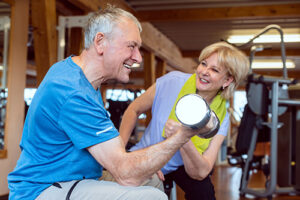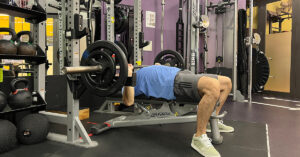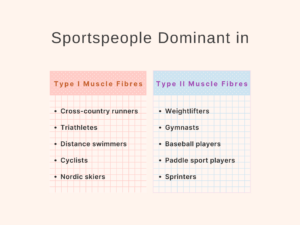A physical fitness assessment is the process of figuring out how physically healthy and fit a person is in terms of his or her overall health or athletic performance. There are many reasons to test one’s fitness level, depending on one’s job and the intended use of the results. A fitness assessment involves a series of tests and measurements that are used to measure different parts of fitness, such as cardiovascular endurance, muscular strength, muscular endurance, flexibility, speed, power, body composition, and so on. Personal trainers and coaches often use fitness assessments to help their clients figure out their current level of fitness, set realistic fitness goals, and create personalised workouts and training plans.
Generally speaking, there are two types of physical fitness assessments:
- Health-related fitness assessment
- Athletic-related fitness assessment.
As their names suggest, one is about a person’s overall health, and the other is about the fitness needs of athletic performance. Components such as balance, coordination, speed, power, agility, and reaction time are the components of athletic-related fitness, whereas body composition, cardiovascular endurance, muscle endurance, muscular strength, and flexibility are the components of health-related physical fitness.
From the perspective of public health, the components related to health are more important. All those five features of health-related fitness contribute equally, or in balance, to one’s physical fitness.
The purpose of a fitness assessment
Depending on the context, we conduct physical fitness assessments for various reasons. In a professional setting, some common examples include:
- Identifying an individual’s physiological strengths and weaknesses to personalise their training programme and prevent injury.
- Ranking candidates for selection purposes such as sports teams
- Predicting future performance in athletic or occupational settings
- Evaluating the effectiveness of a training programme or intervention
- Tracking performance changes over time to monitor progress and adjust training as needed.
- Assigning and manipulating training dosages such as intensities, loads, and volumes to optimise training outcomes
Tests for assessing health-related physical fitness
Physical fitness related to health is measured by evaluating each component separately. A test is an instrument or tool used to assess or measure a specific component or parts. There are several tests available to measure specific parts of physical fitness related to health. The process of evaluation is dynamic and assists in determining an individual’s overall fitness and health. The tests used for this evaluation vary in complexity, reliability, validity, and measurement cost.
| Fitness Component | Type of Test |
|---|---|
| Cardiorespiratory Endurance | Field tests: i.e., Step Tests, 1.5 Mile Walk-Run, One Mile Walk Test Submaximal tests: i.e., YMCA Submaximal Cycle Test and Astrand-Ryhming Cycle Test Maximal tests: Graded Exercise Test |
| Body Composition | Height/Weight, and body mass index (BMI) Circumferences and waist-to-hip ratio Skinfolds Bioelectrical impedance Underwater Weighing |
| Flexibility | Sit and Reach Test Modified Sit and Reach Test |
| Muscular Strength | Hand Grip Test One RM (repetition maximum) |
| Muscular Endurance | Sit-ups Curl-ups Push-ups YMCA Bench Press Test |
Conducting a physical fitness assessment
Analysing the results of fitness tests can reveal a client’s physiological and functional strengths and weaknesses. Exercise professionals can create effective and personalised training plans for their clients when they execute this process correctly. However, conducting fitness tests involves much more than just collecting data. It also entails collecting the right data, analysing it correctly, and presenting it accurately and concisely. All these factors are crucial for the effective use of assessment in fitness.
To offer an effective coaching program at Bring You Health, we begin with many health and physical assessments and questionnaires to determine the needs of our clients. This process of coaching includes assessing a client’s lifestyle, eating pattern, body composition, medical history, movement limitations (including previous or current injuries), and many other aspects. This information allows us to establish a baseline for effective coaching.
Keeping in mind established information and what a client is looking for in terms of needs and objectives, we design and approach his or her coaching program. And to track results and progress in the process, we again assess those parameters when needed.




